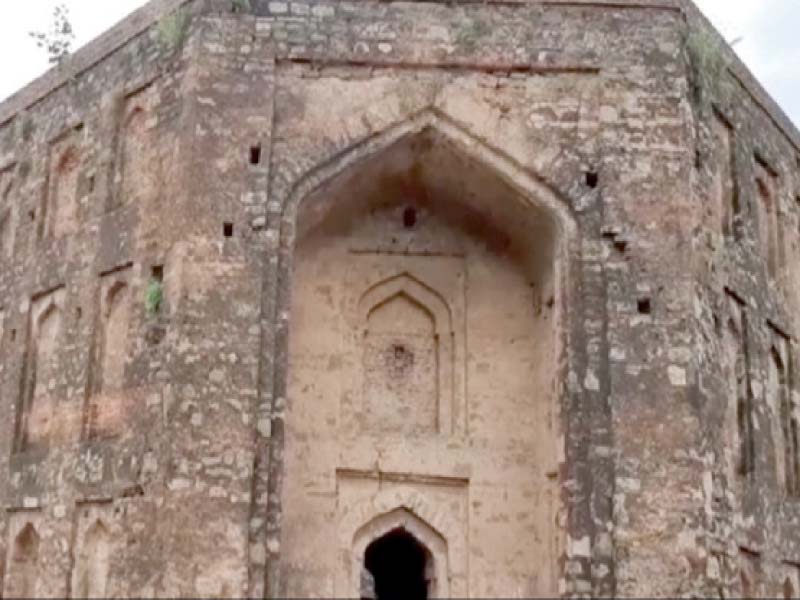
Among the many forgotten relics spread across the Potohar Plateau is the Rawat Fort, which has turned into ruins due to the negligence of the government to preserve the historical fort.
The Punjab Archeology Department has abandoned repair work after whitewashing the entrance gates of the fort. Inside the premises, the fort’s dome, rooms, barracks, and graves have been ravaged by weather.
The locals have converted the premises of this ancient relic into a place where they keep their domestic animals.
The historians believe that that the fort was constructed by the son of great Muslim conqueror, Mehmood Ghaznavi, as early as in 11 century.
Later, it was captured by Sultan Sarang Khan Ghakkar, the head of the Ghakkar tribe, who was a close friend of Mughal emperor Humayun.
However, when the army of Sher Shah Suri attacked, Ghakkar died fighting them and was buried there too. Along with his grave, the graves of his 16 sons are also located in the fort’s premises. However, they have been buried under the shrubs due to non-maintenance.
The Rawat Fort has two main entrances with one facing the Jhelum GT Road.
The Punjab ancient relics department started restoration work after dilapidation stories of the historical site surfaced but left work half done by just whitewashing the entrance gate facing GT Road. The inside on the fort is still in ruins.
The giant dome of the fort has fissured at several spots and the ceiling has become a roosting for bats. The stairs and walls inside the ancient building have also cracked with several of its bricks missing.
A regular historical sites visitor, Rizwan, said that he visited the fort routinely as the ambiance take him back in historical times.
He expressed that it could be speculated by seeing the splendid building that people had attained expertise in architectural skills centuries earlier.
However, the history lover lamented that the Rawat Fort was not being taken care of in the manner it should have been.
He pointed out that there were no security guards at the entrance of the historical site nor the presence of management.
The visitor pointed out that big boulders were carved into bricks and placed in the walls of the fort. However, most of them have been stolen while others have crumbled.
He demanded the government and district administration to formulate a policy to preserve the ancient site and to establish a system to keep a record of those who visited it.
Published in The Express Tribune, September 29th, 2020.








1732012115-0/Untitled-design-(14)1732012115-0-270x192.webp)









COMMENTS
Comments are moderated and generally will be posted if they are on-topic and not abusive.
For more information, please see our Comments FAQ